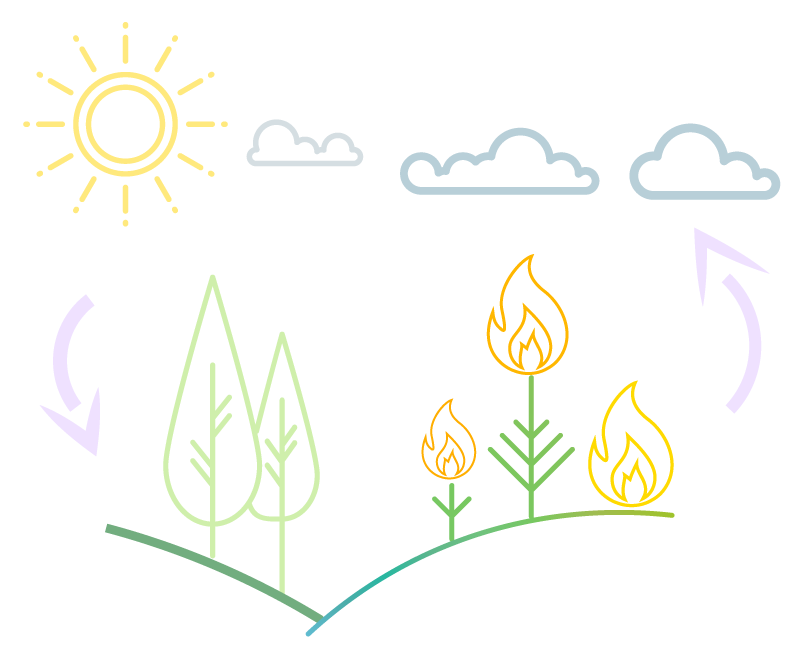Carbon is a component of several “greenhouse gases” or gases in the Earth’s atmosphere that trap the sun’s radiation and increase the temperature of the planet. Carbon dioxide and methane are two common greenhouse gases.

Carbon is also one of the major elements in vegetation. For example, trees are approximately 50% carbon by dry weight (not including the weight of water), and litter and duff (dried and decomposing needles and leaves of plants on the forest floor) are approximately 37% carbon by dry weight.
Forests are regarded as being one of the solutions to the climate crisis, as they can store carbon while governments and society are acting to reduce greenhouse gas emissions from transportation, energy, and manufacturing.
When wildland fires burn vegetation, carbon is returned to the atmosphere. Wildland fires are a natural part of the carbon cycle, and fire is needed to maintain ecosystem health in many areas of the world that are adapted to fire (including the western and southern U.S.). However, climate change is promoting hotter and drier conditions in many parts of the world. Climate change is leading to longer fire seasons, more area burned, and more severe fires than in the recent past.